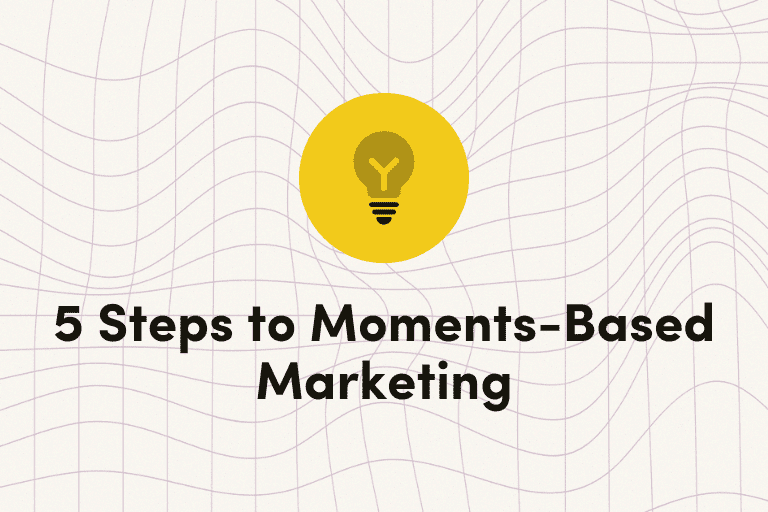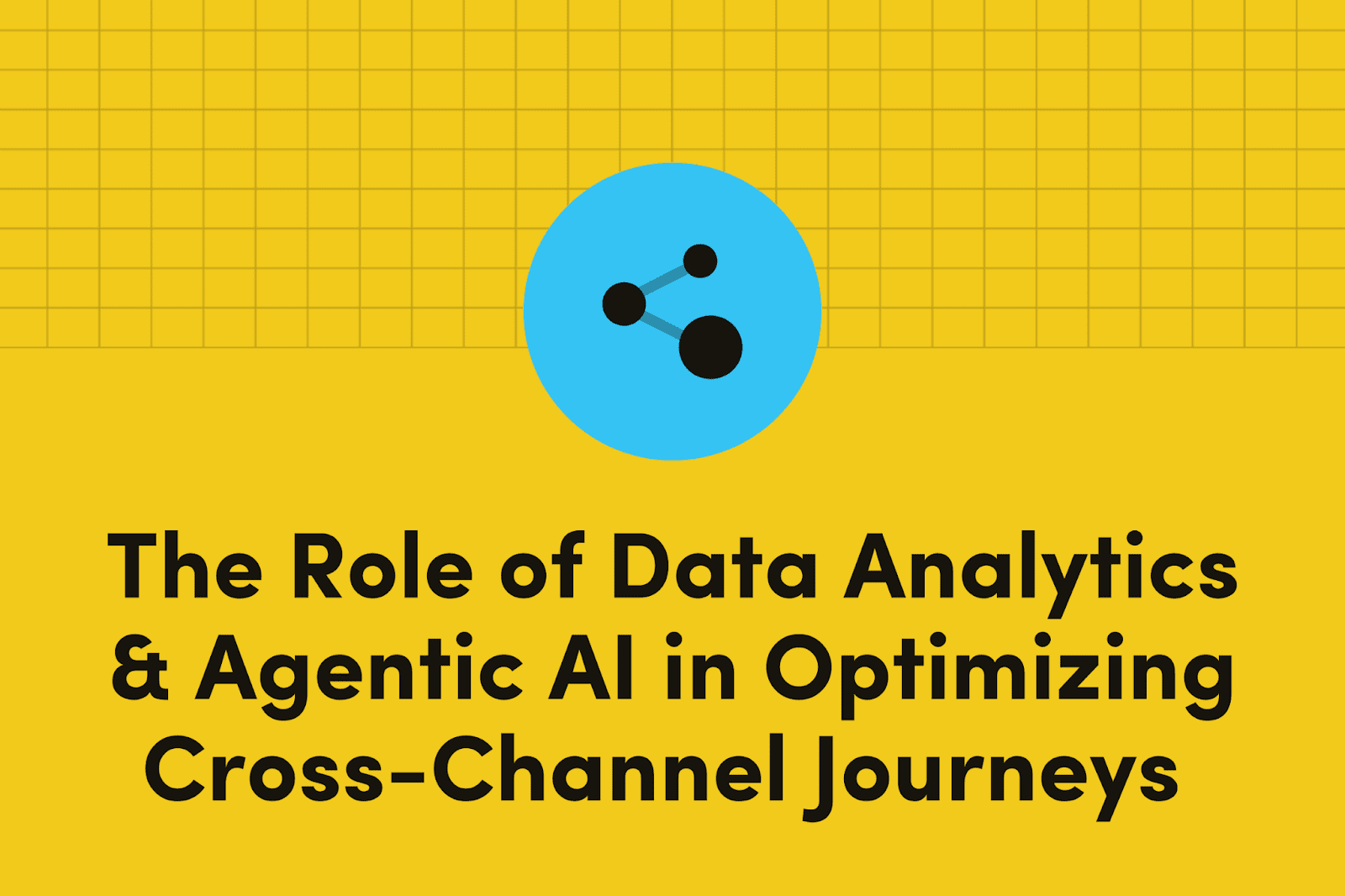Cross-channel marketing gives brands the power to create seamless experiences across every customer touchpoint. But precision takes more than automation; it demands intelligent, real-time analytics. And here’s the truth: your AI strategy is only as strong as the data you feed it. The future of customer experience depends on accurate data that powers smart, proactive decisions.
Key Takeaways
- The Problem: Nearly 50% of leaders say data quality is the #1 barrier to AI success (DBTA / Precisely 2024).
- The Cost: Poor data quality costs enterprises an average of $12.9 million per year (Gartner).
- The Solution: Agentic intelligence (AI agents that act autonomously) is the logical next step once your data is trustworthy.
The Risk of Driving Blind: Why Data Quality is Nonnegotiable
Even the most advanced AI engines can’t function successfully when fueled by flawed data. Real-time marketing requires data readiness, which is the ability to detect, decide, and respond the moment something happens. If the information guiding your campaigns is wrong, missing, or obsolete, you’re making costly decisions based on an unreliable foundation.
Recent research shows that only 12% of organizations believe their data is sufficiently high quality for AI adoption. At the same time, poor data quality costs organizations $12.9M annually.
On the efficiency side, the Association of National Advertisers (ANA) reports that more than half of programmatic ad spend fails to reach intended audiences. This silent drain on resources undermines decision-making and budget effectiveness, making the cost of driving blind a risk no brand can afford.
The Three Pillars of Analytics-Driven Cross-Channel Optimization
Data analytics should be integrated at every point of the customer journey to ensure continuous improvement.
1. Real-Time Analytics and Optimization
Real-time analytics monitor campaign performance from the moment the first message is sent, allowing marketers to detect anomalies, shift traffic, or swap creative dynamically. This immediate feedback loop is essential for two key actions:
- A/B Testing & Optimization: Real-time data allows for immediate, intelligent experimentation. Your marketing platform can actively monitor hundred of message variants and automatically adjust traffic to the winning content, channel, or timing, essentially optimizing the campaign in-flight.
- Problem Mitigation: You can quickly detect and correct errors in segmentation or journey flows before they impact a large portion of your audience. By breaking free from static workflows, marketers can shift toward responsive journeys that evolve in real-time and adapt dynamically using clean data, event-based triggers, and AI-powered personalization.
2. Post-Campaign Evaluation
This is your reflection phase: dig into traditional metrics such as opens, clicks, unsubscribes, in-app dismissals, and channel-specific metrics. Refined insights here feed directly into your next campaign’s structure and hypothesis.
Case in point: Calm used this approach to analyze onboarding engagement and discovered that nearly 80% of new users dropped off within the first 30 minutes. This insight revealed that the first hour was a critical opportunity to capture and retain attention. By refining their cross-channel onboarding flows with Iterable, Calm addressed the pivotal churn moment. By shortening its onboarding series from 27 days to 15 days, the team accelerated value delivery and achieved a 4× increase in revenue.
“When thinking of how to optimize campaigns, my answer is always, it depends. I ought to look at the data. Iterable allows me to take insights across technologies and apply informed changes that drive the most important metric—revenue.”
~ Sue Cho, Head of Lifecycle Marketing at Calm
3. Aggregate / Journey-Level Analytics
This is where true cross-channel lift happens. To see the full picture, you must connect the dots across channels by combining interaction logs, transaction history, ad data, and offline signals into a unified journey model. This aggregated view is essential for perfecting the channel mix formula and achieving accurate cross-channel attribution.
Case in point: CoinStats faced the challenge of driving higher retention and activation while engaging users across both mobile and email. By unifying behavioral and transactional data into a single event model, CoinStats could act on insights in real time, triggering personalized journeys at the right moments. The result was stronger engagement and more effective activation, which translated into measurable outcomes: a 35% decrease in abandonment rates, a 20% increase in user activity, and nearly 2× higher personalized push open rates (from 5.91% to 10.38%).
Building a Data-First Marketing Engine
To transition from strategy to execution and build a truly intelligent, data-driven cross-channel platform, your organization must align on the following critical components:
|
Key component |
How to execute |
Why it matters |
|
Data Capture & Ingestion |
Use smart ingestion tools (like Iterable’s Smart Ingest) to funnel behavioral, transactional, and advertising data into a data warehouse or unified store. For more on building a tech stack that supports seamless, centralized data activation, check out The Future of MarTech Is Composable. |
Without a single source of truth, analytics remain fragmented, and AI models cannot make reliable, real-time decisions. Centralized data is the foundation of precision. |
|
Quality, Observability & Governance |
Automate checks, data cleansing to remove duplicates, schema enforcement, and freshness alerts. Address the most common issues, such as inconsistent formatting and duplicates, with specific remediation tactics. |
Clean, reliable data prevents wasted spend and ensures AI agents act on trustworthy signals rather than flawed inputs. |
|
Analytics, Modeling, and Insight Layer |
Build predictive models, compute affinity segmentation, and instrument APIs so insights flow directly to activation. Marketers need guides on how to implement cross-channel analytics to ensure proper metric definition. |
This is where raw data becomes intelligence. Analytics and models uncover hidden opportunities and fuel personalization at scale. |
|
Journeys & Activation Layer |
Layer in Next Best Action, Journey Assist, and branching logic so campaigns adapt based on real-time signals, not static paths. |
Activation turns insights into action. Without adaptive journeys, even the best analytics remain unused, and customer experiences stagnate. |
|
Culture & Iteration |
Break down silos. Train marketers and data teams to speak each other’s language. Make data quality a shared, cross-team metric. Culture is often the toughest barrier to change. |
Tools cannot transform a business without people and process alignment. A data-driven culture ensures consistency, accountability, and continuous improvement. |
The Intelligence Layer: How Agentic AI Changes the Game
Once your data foundation is reliable, agentic AI becomes a force multiplier, enabling intelligent systems (or AI agents) to execute personalized decisions autonomously.
|
Feature |
What It Does |
|
|
|
Check out all of Iterable’s AI capabilities here.
Frequently Asked Questions (FAQ) About Data Analytics
-
How do data analytics and AI agents work together to improve cross-channel marketing?
Data analytics is the foundation of effective cross-channel marketing. It connects behavioral, transactional, and engagement data into a single view, showing how customers move between channels and which touchpoints drive results. Real-time analytics make this actionable by allowing marketers to detect drop-offs, test variations, and adjust journeys on the fly. From there, agentic AI features like Next Best Action, Predictive Goals, and Brand Affinity™ use these insights to act autonomously, choosing the right channel, content, and timing for every customer interaction. The result is smarter, more personalized campaigns that continually improve with each data point. -
How does data quality affect AI and agentic intelligence?
AI is only as smart as the data it learns from. When your data is fragmented, outdated, or inconsistent, your models can’t make accurate or explainable decisions. Agentic systems depend on connected, contextual, and current data to act in the moment. If that foundation is flawed, AI doesn’t just make mistakes—it automates them at scale. Building AI-ready data means unifying your sources of truth, keeping signals fresh, and maintaining transparency so every action is both intelligent and accountable. Learn how to achieve AI readiness with Your Checklist for Unlocking the Power of AI. -
What are the most important steps to implement a data-first cross-channel strategy?
- Centralize your data ingestion — Bring behavioral, transactional, and advertising data into one unified source.
- Automate quality checks — Remove duplicate records, enforce schema rules, and set freshness alerts so teams can trust the data.
- Layer in predictive analytics — Use models like predictive scoring and brand affinity to anticipate customer needs.
- Activate with intelligent decisioning — Leverage tools such as Iterable’s Next Best Action to personalize journeys in real time.
- Foster a data-driven culture — Break down silos, build data literacy, and create consistent cross-team feedback loops.
Ready to Build Your Agentic Marketing Engine?
Don’t let bad data hold back your AI initiatives. Iterable unifies your customer data and powers intelligent cross-channel journeys with features like Next Best Action, Predictive Goals, and Brand Affinity. With these capabilities, every customer interaction becomes more relevant, timely, and impactful.
The path to agentic intelligence starts with a strong data foundation. The sooner you begin, the faster you can eliminate wasted spend, accelerate personalization, and unlock growth. Iterable helps you move from insights to action and turn analytics into measurable outcomes at scale.
| If you’re ready to take your cross-channel marketing to the next level with unified data and AI-powered orchestration, check out The Marketer’s Guide to Cross-Channel Success. |
































